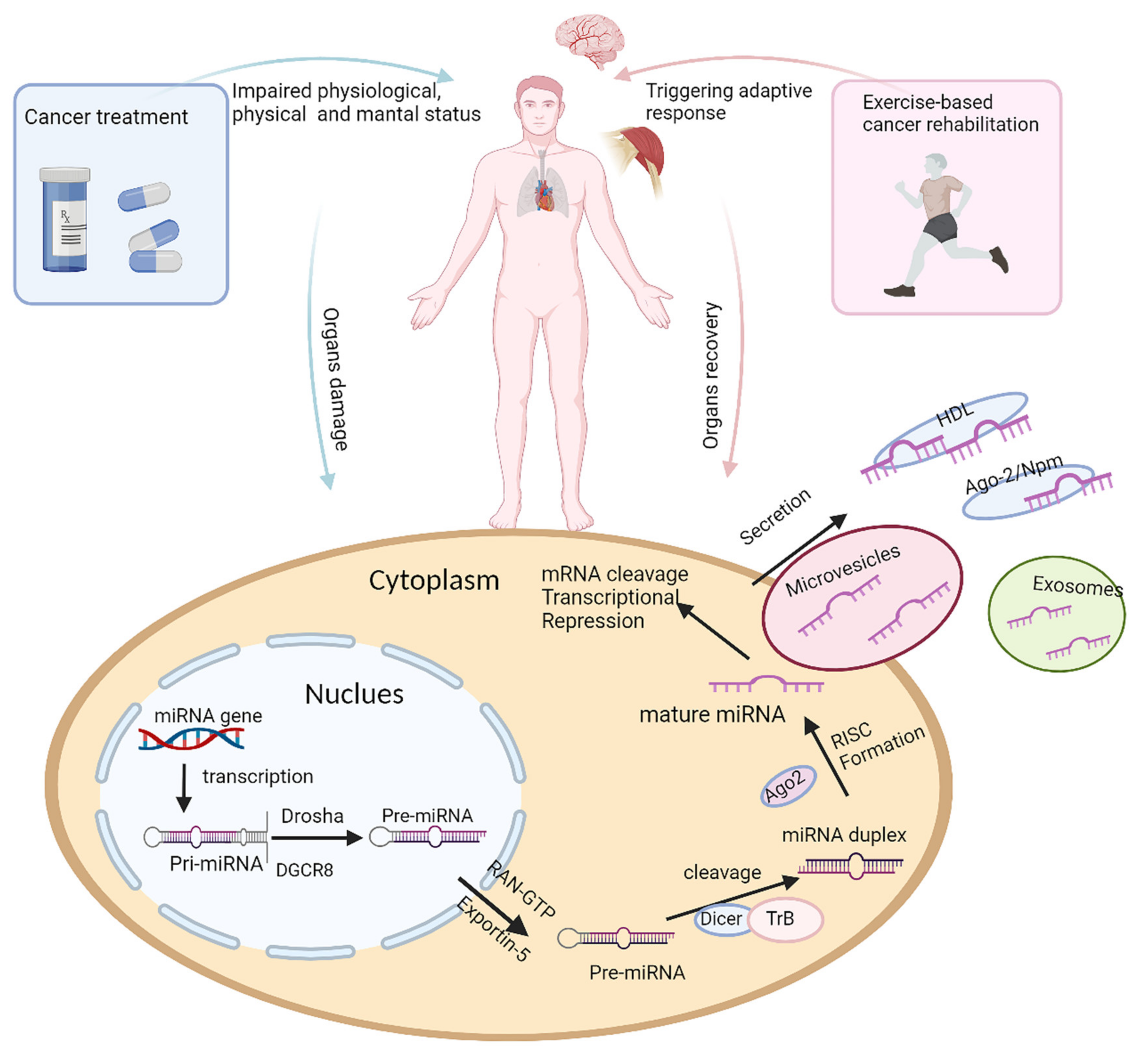Although miR-1 and miR-133 are clustered on the same chromosomal loci, they have very distinct roles in transcriptional circuits and therefore differentially regulate skeletal muscle cell proliferation and differentiation. miR-1 promotes myogenesis by targeting transcriptional gene histone deacetylase 4 in muscle, while miR-133 enhances myoblast proliferation by inhibiting serum response factor
[42][115]. Moreover, miR-1 and miR-133 show different expression patterns in response to aerobic and resistance exercises. Both miRNAs were upregulated within three hours following an acute aerobic exercise bout but downregulated after four weeks of aerobic endurance training
[43][116]. Again they decreased after 6 h of resistance training and remained downregulated after a week of resistance exercise training
[43][116]. Recent work suggested that reduced IGF-1 protein was associated with upregulated miR-133 during the differentiation of C2C12 cells. Overexpression of miR-133 during differentiation significantly suppressed the expression of the IGF-1 receptor at the transcriptional level by downregulating the phosphorylation of
Akt. Moreover, the upregulation of miR-133 can be accelerated by the addition of IGF-1. These results indicated that metabolism-related factors played an important role in myogenesis
[43][44][116,117]. MiR-133a-deficient mice had a low maximal exercise capacity and low resting metabolic rate. The downregulated transcription of a set of mitochondrial biogenesis regulators, such as nuclear respiratory factor-1, transcription factor A, and so on, may explain lower mitochondrial mass and impaired exercise capacity in miR-133a-deficient mice. Six weeks of endurance training improved the expression of miR-133a and stimulated mitochondrial biogenesis in wild-type mice but failed to enhance the mitochondrial function in miR-133a-deficient mice
[45][118]. Mechanistic analysis showed IGF-1 receptor, the target of miR-133a, and the hyperactivation of
Akt signalling were involved in the lower transcription of the mitochondrial biogenesis regulators
[45][118]. These results suggested that miR-133a reduced exercise capacity by lowering mitochondrial function. However, few studies were conducted to establish the correlation between the expression of miR-1 and miR-133 and muscle mass or strength after exercise training.

